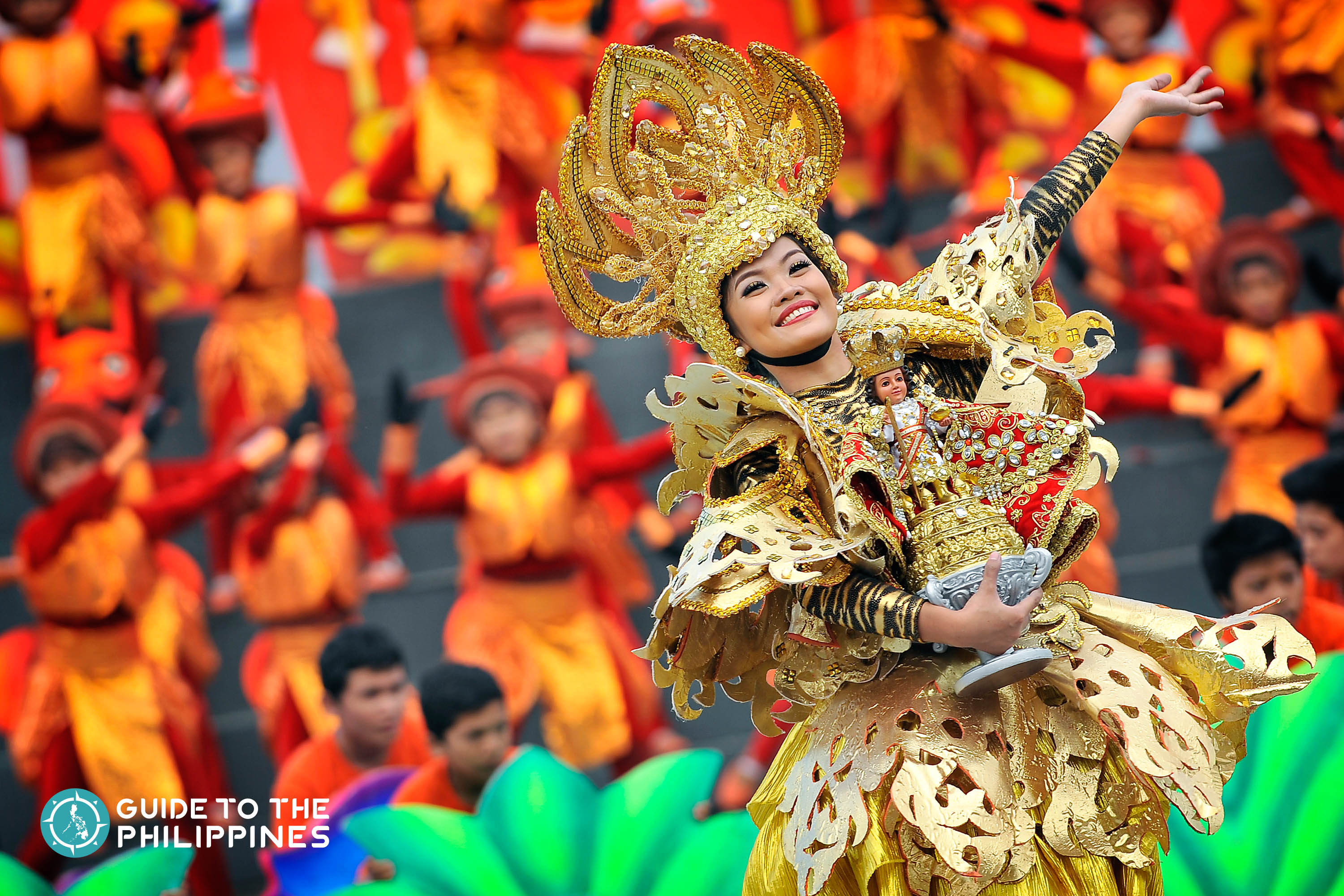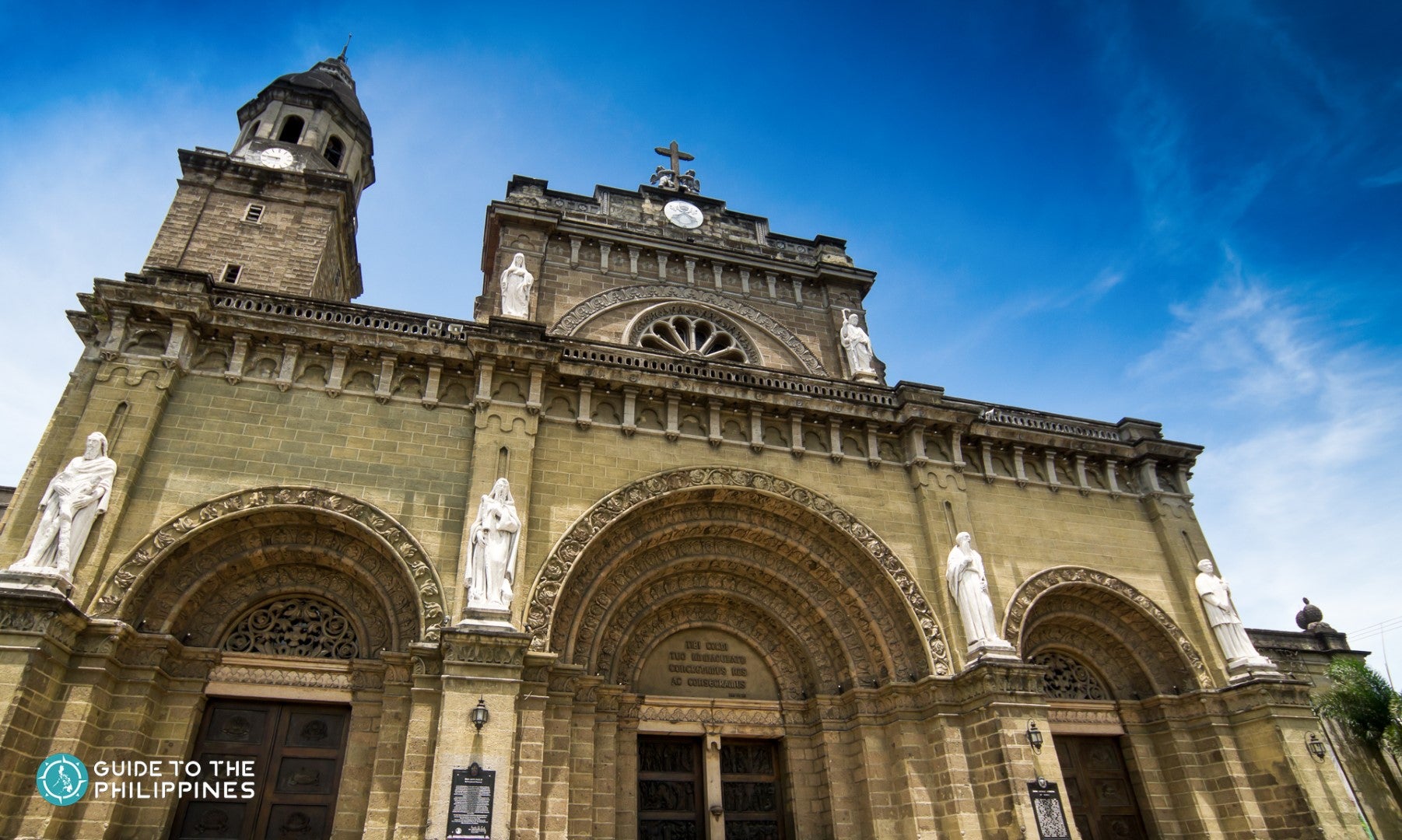
Apart from getting together to feast on the best of Filipino cuisine, drinking sessions are a staple in any celebration in the Philippines. From birthday or graduation parties to big town fiestas, down to the smallest of gatherings, Filipinos just can’t seem to get together without having drinks on the table.
Filipinos are known to be hard and strong drinkers! We drink when we want to celebrate. We drink when we want to comfort a broken-hearted fellow. We drink to cap off a fun-filled day of exploring the best Philippine beaches and islands. And we drink just because!
- Join food and drinking tours in the Philippines
If you find yourself in this country, best to get your livers ready because inuman (Filipino word for drinking) here is going to be a fun, wild, and unforgettable (well, you’ll probably only remember half of the night) experience! Read this guide to get a glimpse of what the Philippines' drinking culture is all about:
Drinking in the Philippines: What You Need to Know
Unlike other countries where it is customary to have some wine or beer while eating meals, inuman in the Philippines is most often a planned and separate session in itself. And here are some of the drinking customs that make inuman distinctly Filipino:
Tagayan
 Photo by Tortuga PH
Photo by Tortuga PH
When drinking in groups in the Philippines, do not expect to be given individual glasses. Tagayan, or simply tagay, is the name of the game here. Drinkers share a common glass, passed around in a round-robin sequence.
The tanggero (also called the “gunner”), leads the pack, and pours the drink every time, measuring the liquor by eye.
It is frowned upon to take a pass, but when a drinker is already really buzzed, someone from the group must drink the shot for him or her — not all heroes wear capes, you know!
Also, there is no direct translation for “cheers!” in the Philippines. Many contest this and say that “tagay” is our local version — so yes, just say “tagay!” when in an inuman, and glasses and bottles go clinking for sure.
Karaoke
 Photo by Monkey MIC
Photo by Monkey MIC
It’s no secret that Filipinos are great singers. And whether you’re a belter ala Celine Dion or Lea Salonga, or someone completely out of tune, nobody cares! Inuman sessions are usually accompanied by a karaoke machine, especially in rural areas.
Mid- and high-end KTV bars are also all-around in cities, with rooms that can fit up to 10 people or more. When you hear “Where Do Broken Hearts Go” sung with a choked voice and with teary eyes, the night is probably far from over.
Alay sa Demonyo
This literally means “offering to the devil.” As absurd as it sounds, this custom is still being practiced up to today.
When a new liquor bottle is opened, the tanggero pours the first few drops into the bottle cap and tosses it to the ground. Urban legends say this is to appease the spirits or unseen elements around, especially when the chatting becomes louder as the night goes on.
Chaser
It's customary to have “chasers” when drinking hard liquor in the Philippines. These are beverages, mostly sweet ones, that are drank immediately after downing a shot to relieve the bitter taste or strong kick of the alcohol.
Most popular chasers include soda, orange juice, and iced tea. But some would swear by plain, cold water as the best chaser, saying it helps avoid having a bad hangover the next day — talk about balance!
Drinking on the streets
 Photo by El Chupacabra
Photo by El Chupacabra
Titos (Filipino term for uncle or any adult man) or a barkada (friendship groups) in a circle, sitting on monobloc chairs by the streets with bottles of liquor on a make-shift table, have long been a common sight in the Philippines.
However, a national order has been passed prohibiting drinking in public places. But in most provinces and rural areas, this is still being practiced, and expect to be invited for a shot or two by the locals. It’s considered an insult to refuse — unless you say you are allergic to alcohol.
Legal drinking age
 Photo by Colt 45 Philippines
Photo by Colt 45 Philippines
The legal drinking age in the Philippines is 18 years old, and selling liquor to minors is not allowed.
Drinks
Now that you know the customs of drinking in the Philippines, read on to learn the choice of drinks that you can indulge on during inuman sessions:
Beer
 Photo by Elina Krasteva
Photo by Elina Krasteva
Beer is the go-to drink for most Filipinos, mostly because it is cheap. A single bottle can be bought for PHP40 or less than $1, while bigger ones for sharing is only around $2.
San Miguel Beer is the dominant player, with varieties such as Light and Pale Pilsen as the most popular. But their Red Horse Beer is also a favorite because of its high alcohol content and strong kick — Filipinos like to get their money’s worth, especially when it comes to drinks.
Many restaurants and bars offer beer by the bucket, usually sold as a promotion of 5 beers plus one free bottle. Others offer a combo of a beer bucket and one dish, pushing their products and enticing groups to stay and order more.
Hard Liquor
 Photo by Tanduay Rhum
Photo by Tanduay Rhum
Proof that Filipinos take drinking seriously? The Philippines is the world’s largest gin market. Ginebra is the country’s leading brand and is widely referred to as gin bulag (bulag is Filipino term for blind, and myths say this gin is so strong that it can lead to blindness).
As for rum, Tanduay has overtaken Bacardi as the world’s best-selling rum. Emperador continues to be the world’s best-selling brandy in terms of quantity sold. Its Emperador Light variant is a household name, especially to the younger generation, because of its sweet taste and relatively light kick.
Local Spirits
Local and indigenous spirits are also still popular in the country, especially in provinces and rural areas.
As the second-largest producer of coconuts in the world, Filipinos utilize every part of this amazing tree. Fermented sap from the tree’s young flowers is called tuba, and is enjoyed by locals for its sweet and fresh taste.
A distilled version of the coconut sap becomes lambanog, which has become a hit for the younger generations, especially the flavored ones. There was a time that blue-colored, bubble gum flavor lambanog was the thing!
In the Ilocos region up in Northern Luzon, basi is the favorite and has been consumed even before the Spanish conquerors came to the country. Basi is a beverage made from sugarcane, boiled in vats, and stored in earthen jars until it becomes the fine wine that it is.
Pulutan
A drinking session in the Philippines won’t be complete without food. Call them beer matches, bar chows, or tapas, but food accompanying drinks are called pulutan here.
The term comes from the root word “pulot” which means to “to pick up” or “grab”, as drinkers usually grab small bites in between drinks.
Pulutan can be as simple and cheap as corn chips or potato crisps and can go as fancy as gambas al ajillo or wagyu cubes. Usually salty, crispy, and oily, here are the most popular pulutan dishes you can find in Filipino inuman:
Sisig
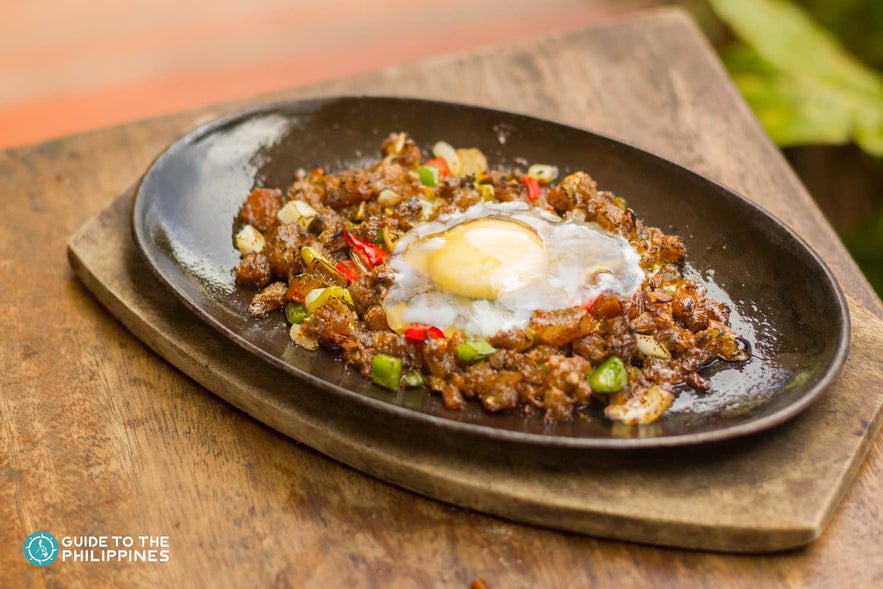
Made from parts of a pig’s head and chicken liver, Sisig is an all-time favorite for Filipinos that originated from the province of Pampanga.
This dish with minced meat and skin is combined with onions, chili peppers, and calamansi (native lime), served on a hot plate. The resulting dish is crunchy, salty and sour, and usually spicy — perfect textures and flavors to cut in between strong alcohol tastes.
Crispy Pata
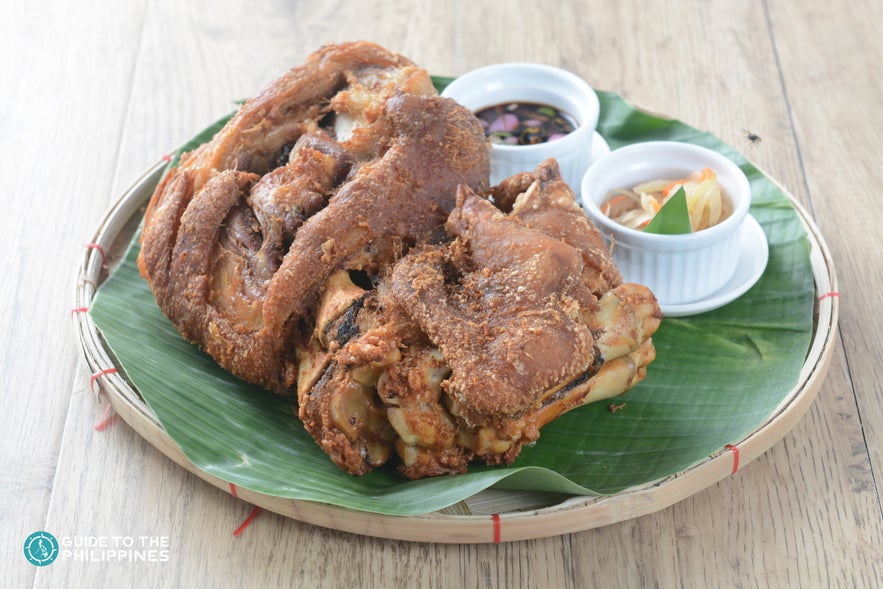
Tender pork leg boiled for hours with spices and seasonings and then deep-fried to golden perfection, Crispy Pata is almost a star in any inuman session.
Get ready to get a piece of the crispy skin because most likely, it will be gone in seconds. The moist meat is best dipped in a sauce made of soy sauce, vinegar, garlic, and chili.
Tokwa’t Baboy
Translating directly to “tofu and pig”, this appetizer is a staple on the menu of most resto-bars, drinking venues, and even side-street eateries. It is a combination of deep-fried tofu cubes and tender pork meat (sometimes, pig’s ears are also used).
It is then tossed with soy sauce, vinegar, onions, chili peppers, and a bit of sugar. The dish is usually served in small portions, so expect to be ordering more of this irresistible pulutan as the drinking session goes along.
Kilawin / Kinilaw
The Philippines’ version of ceviche. Kinilaw is made with fresh, raw fish (usually tuna or marlin) “cooked” in coconut and cane vinegar, along with onions, ginger, chili peppers, and calamansi. Some people add coconut milk or mayonnaise for a creamier version.
Pork Kilawin uses almost the same ingredients as fish kinilaw, but the pork belly has to be grilled first as vinegar alone won’t cook the meat. This salty, sour, and tangy dish is a drinking crowd’s favorite.
Chicharon or Kropek
 Photo by Eiliv-Sonas Aceron
Photo by Eiliv-Sonas Aceron
Chicharon, or deep-fried pork rinds, is a staple pulutan in the country because it is always available. You can order this from the restaurant or bar, buy packed ones in grocery stores, or get some from a vendor walking around drinking places and streets.
Nothing beats munching on chicharon with laman (rinds with some meat and fat) dipped in spicy vinegar after a gulp of ice-cold beer.
Kropek, on the other hand, are prawn crackers that are usually sold in packs that can be fried at home so they stay fresh and crispy when the barkada comes over.
Mani
Roasted peanuts are probably the most popular and affordable pulutan one can have when in the Philippines. Mixed nuts are usually served in bars as a complimentary pulutan.
If you find yourself in an open-air bar or drinking places by the streets, chances are there is a vendor going around with a huge bowl of peanuts for sale, with one order that can go as cheap as PHP10 or PHP20.
Papaitan
Known for its strong and distinct taste, Papaitan is also considered a great beer match. The dish is usually made of cow or goat innards.
Papaitan comes from the word “pait” which means bitter, and this soup’s final bitter taste comes from the bile juice mixed through during the cooking.
After-drink Meals
We’ve seen it in the movies and internet memes: drunk people stuffing their faces with burger, fries, and anything oily after a hard-drinking session. In the Philippines, the go-to after-drink meal is anything hot — hoping it helps them come back to their senses.
This is why you will find that food stalls selling hot soups and noodles are open in the wee hours of the night or after midnight in many parts of the country.
Lugaw, Goto, and Arroz Caldo
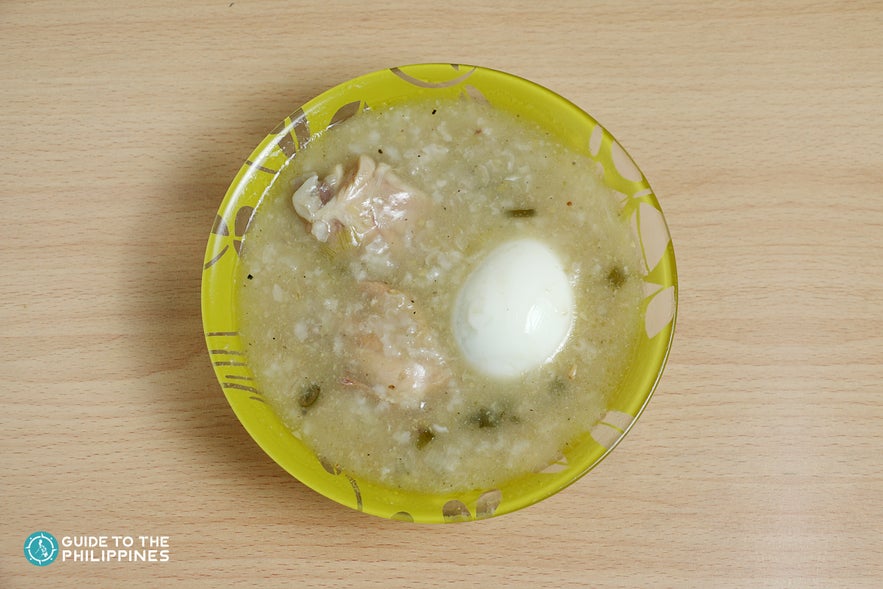
Different versions of rice porridge served plain, with beef tripe or chicken meat, or with hard-boiled eggs — are the usual pulutan suspects. They're filling comfort food that are also favorite breakfast and late afternoon snacks or merienda in the Philippines.
Mami, Batchoy, and Lomi
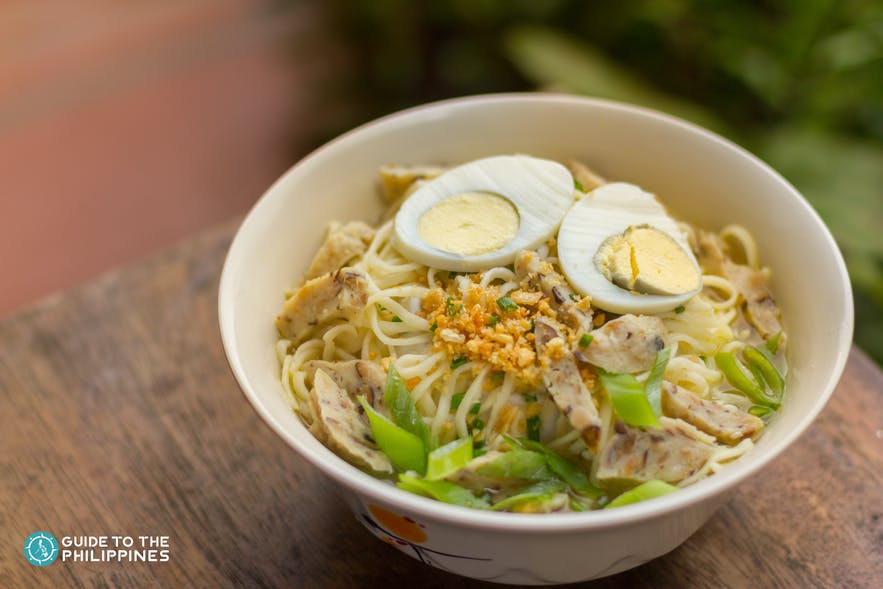
Hot noodle dishes such as mami, batchoy, and lomi are also crowd favorites and is favored as a quick snack. If you're in Iloilo, don't miss the chance to eat the famous La Paz Batchoy. Meanwhile, the province of Batangas is known as the home of the best lomi.
Bulalo
A soup with beef shanks, bone marrow, and corn cobs. It is a more expensive option, and is usually shared among a group, but the hot and rich broth is definitely a great after-drink meal. For the best bulalo eating experience, Tagaytay is a favorite destination for locals.
Pares
One could also go for a complete meal of meat and rice after a drinking session. Pares is a braised beef stew best paired with garlic rice. Some even offer pares with a whole bone marrow.
Silog

Silog is a collective term for the country’s popular breakfast meals. The term combines shortened versions of the words “sinangag” and “itlog”, which mean fried rice and egg, respectively.
Both are accompanied by a meat option, usually processed or cured, such as hotdog, beef tapa, corned beef, ham slices, or sausages. It's the perfect pair for a hot cup of Philippine coffee.
So when you probably end the inuman early in the morning, this is a great option for an after-drink meal and breakfast in one!
Experience the Drinking Culture of the Philippines
 Photo by Tortuga PH
Photo by Tortuga PH
There is no denying that drinking is a large part of the Philippines’ culture and daily life. Drinking is a social activity that is done in the Philippines mainly to foster camaraderie, to build wider and larger circles, and to celebrate the good, the sad, and everything in between.
Get ready to experience the Filipino’s warmth and hospitality in a good round of beers and rums. You only need to remember one Filipino word, “tagay!”

